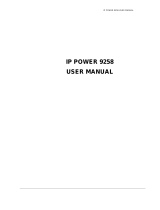
3
English
As appropriate, wear dust mask, hearing protectors, gloves
and workshop apron capable of stopping small abrasive or
workpiece fragments. The eye protection must be capable of
stopping flying debris generated by various operations. The dust
mask or respirator must be capable of filtrating particles generated
by your operation. Prolonged exposure to high intensity noise may
cause hearing loss.
• Position the cord clear of the spinning accessory. If you lose
control, the cord may be cut or snagged and your hand or arm may
be pulled into the spinning accessory.
• Never lay the power tool down until the accessory has come
to a complete stop. The spinning accessory may grab the surface
and pull the power tool out of your control.
• Do not run the power tool while carrying it at your side.
Accidental contact with the spinning accessory could snag your
clothing, pulling the accessory into your body.
• Regularly clean the power tool’s air vents. The motor’s fan will
draw the dust inside the housing and excessive accumulation of
powdered metal may cause electrical hazards.
• Do not operate the power tool near flammable materials.
Sparks could ignite these materials.
• Do not use accessories that require liquid coolants. Using
water or other liquid coolants may result in electrocution or shock.
• DO NOT use wire brushes with this surface grinding shroud.
• DO NOT use abrasive wheels.
• DO NOT grind or cut metal with a diamond cup wheel.
Fragments could loosen and fly apart.
• ALWAYS use with a dust collector.
WARNING: When not in use, place grinder on a stable surface
where it will not move inadvertantly, roll or cause a tripping or
falling hazard. Serious personal injury may result.
WARNING: ALWAYS use safety glasses. Everyday eyeglasses are
NOT safety glasses. Also use face or dust mask if cutting operation is
dusty. ALWAYS wear certified safety equipment:
• ANSI Z87.1 eye protection (CAN/CSA Z94.3).
• ANSI S12.6 (S3.19) hearing protection.
• NIOSH/OSHA respiratory protection.
WARNING: Some dust created by power sanding, sawing, grinding,
drilling, and other construction activities contains chemicals known to
the State of California to cause cancer, birth defects or other
reproductive harm. Some examples of these chemicals are:
• lead from lead-based paints,
• crystalline silica from bricks and cement and other masonry
products, and
• arsenic and chromium from chemically-treated lumber.
Your risk from these exposures varies, depending on how often you do
this type of work. To reduce your exposure to these chemicals: work
in a well ventilated area, and work with approved safety equipment,
such as those dust masks that are specially designed to filter out
microscopic particles.
• Avoid prolonged contact with dust from power sanding,
sawing, grinding, drilling, and other construction activities.
Wear protective clothing and wash exposed areas with soap
and water. Allowing dust to get into your mouth, eyes, or lay on
the skin may promote absorption of harmful chemicals.
WARNING: Use of this tool can generate and/or disburse dust,
which may cause serious and permanent respiratory or other injury.
Always use NIOSH/OSHA approved respiratory protection appropriate
for the dust exposure. Direct particles away from face and body.
WARNING: Before beginning the work, check to determine
the hazard classification of the dust produced. Use an industrial
dust extractor vacuum of the appropriate, officially approved



















